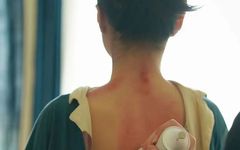What is Gua Sha?
Gua Sha is a method of using a Gua Sha board dipped in oil to repeatedly scrape specific areas of the body, rubbing the patient’s skin to regulate diseases.
According to the principles of the twelve meridians and the eight extraordinary vessels in Traditional Chinese Medicine (TCM), Gua Sha employs strong manual stimulation of the meridians, causing local skin to become red and congested, thereby achieving effects such as awakening the spirit, detoxifying, clearing heat and relieving exterior conditions, promoting Qi flow and alleviating pain, and strengthening the spleen and stomach.
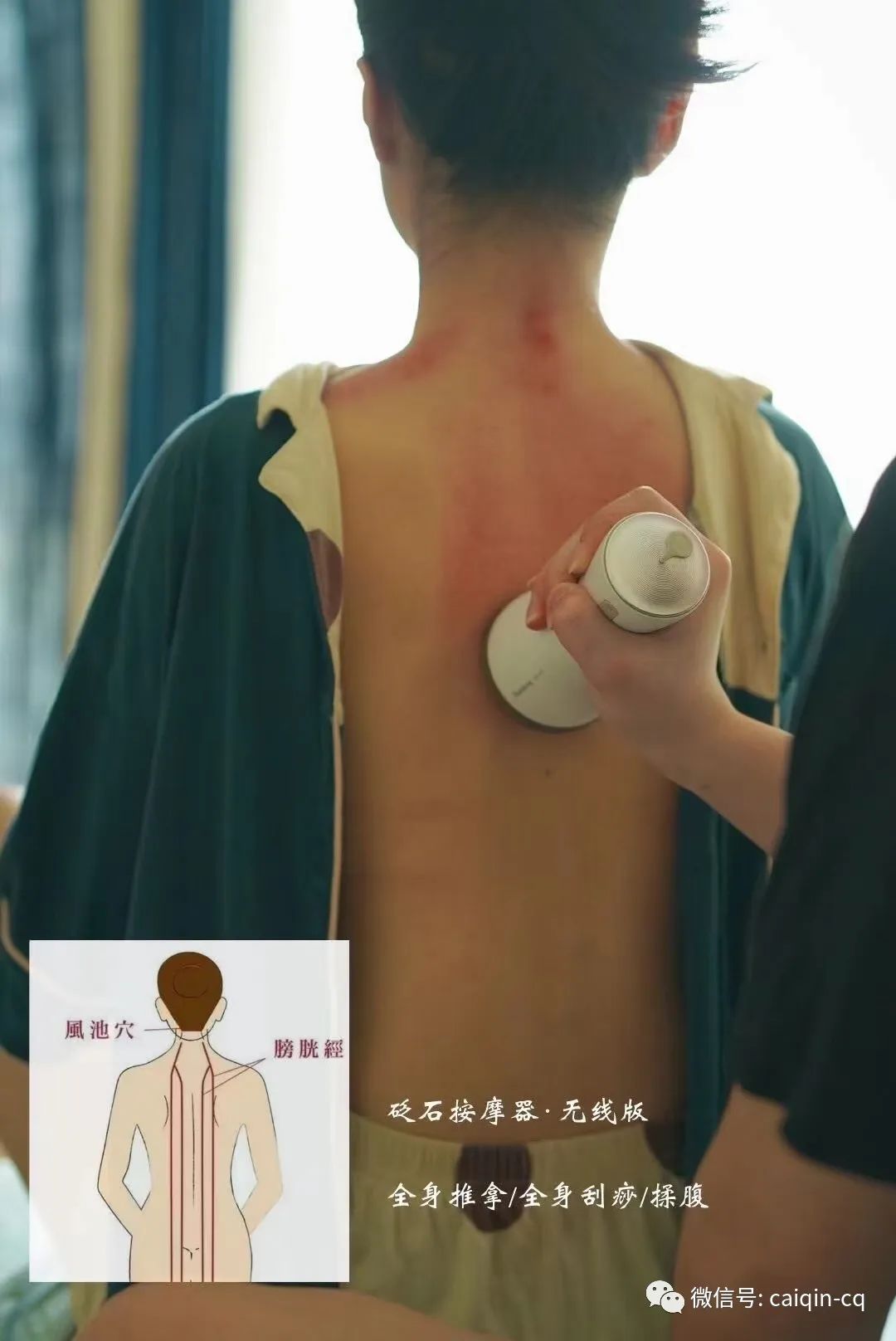
Why Should You Practice Gua Sha? (Effects of Gua Sha)
“Stagnation leads to deficiency” is a characteristic of modern people’s constitution. Modern individuals often consume excessive food, leading to an overburdened digestive system, combined with irregular lifestyles, high work pressure, excessive mental strain, lack of physical activity, and insufficient sleep, making the body prone to fatigue, endocrine disorders, and metabolic disturbances. This results in an accumulation of metabolic waste that obstructs the flow of Qi and blood, leading to microcirculation disorders. Over time, this not only affects health but can also induce diseases.
Gua Sha can quickly detoxify, improve microcirculation, invigorate blood and resolve stasis, enhance immune regulation, and cleanse the internal environment, making it an excellent health maintenance technique suitable for the characteristics of modern people’s constitution.
1. Quick detoxification and prevention of various chronic diseases
The accumulation of toxins in the body is a significant inducement for sub-health and diseases. Stagnation of Qi and blood slows down local metabolism, leading to heat generation from stagnation, producing harmful internal toxins. These internal toxins are pathological products that disrupt organ function, pollute the internal environment, and obstruct the flow of Qi and blood, serving as important inducements for the occurrence and development of diseases. If not treated in time, serious microcirculation disorders, endocrine disruptions, and metabolic abnormalities can arise, leading to various diseases.
Symptoms or diseases caused by internal toxins include various sub-health symptoms, hyperlipidemia, diabetes, cardiovascular and cerebrovascular diseases, breast hyperplasia, dysmenorrhea, gastrointestinal diseases, joint pain, immune dysfunction, and inflammation.
Scraping out Sha can quickly detoxify. Gua Sha is a rapid method for expelling pathogenic Qi. After Gua Sha, the skin’s sweat pores expand, allowing for direct expulsion of pathogenic Qi through the pores. When Gua Sha is performed on areas with accumulated toxins, Sha will appear. Scraping out Sha can expel toxic blood from the vessels. The appearance of Sha also has anti-inflammatory and antibacterial effects. Unlike medications, the anti-inflammatory and antibacterial effects of Gua Sha are achieved by adjusting the flow of Qi and blood, improving microcirculation, enhancing the phagocytic ability of lymphocytes and white blood cells, and promoting the accelerated excretion of waste and toxins through the body’s metabolic and regulatory capabilities.
2. Rapidly cleanse the internal environment and promote beauty
An unclean internal environment leads to premature aging. When an organ is in a state of sub-health or exhibits pathological changes, the speed of metabolism slows down, and metabolic products cannot be expelled through normal channels in a timely manner, leading to pollution of the internal environment and premature aging.
Symptoms or diseases caused by internal environmental pollution include dull complexion, thirst, bad breath, constipation, yellow urine, irritability, decreased appetite, dizziness, fatigue, insomnia, forgetfulness, and various other symptoms.
Double cleansing inside and out, purifying the internal environment. Gua Sha opens the skin’s sweat pores and expels Sha, allowing for the rapid removal of metabolic products from the blood, promoting the flow of Qi and blood, enhancing metabolism, improving microcirculation, and cleansing and purifying the skin and internal organ environment. Scraping the acupuncture points on the trunk and limbs can regulate the organs, restore and enhance the body’s excretory functions through diuresis, bowel movements, and sweating, allowing for timely excretion of metabolic products.
3. Enhance immune regulation and improve disease resistance
Unhealthy lifestyles have led to weakened immune functions in modern individuals. Competitive pressure, smoking, excessive drinking, and staying up late severely impact modern people’s immune regulation. A comfortable living environment weakens muscle contraction, reducing the body’s stress response and regulatory functions; processed foods lower gastrointestinal motility; and severe air pollution irritates the respiratory tract and contaminates the blood.
Symptoms and diseases caused include colds, asthma, allergic diseases, infectious diseases, and abnormalities in immune regulation.
The process of Sha retreating can enhance immune function. Mobilizing the body’s “cleaners”: there are many immune-functioning lymphocytes and phagocytes in the blood, lymph, and interstitial fluid, which can recognize and eliminate foreign substances (abnormal tissues, foreign tissues) and are known as the body’s “cleaners.” The Sha produced during scraping will be quickly recognized and expelled by them. Regular Gua Sha and the process of producing and retreating Sha can activate the body’s immune cells, enhancing the rejection ability of the body’s cleaners and effectively and rapidly clearing pathological products.
4. Quickly invigorate blood and resolve stasis, alleviating body pain
Qi stagnation and blood stasis are the main causes of painful diseases. TCM believes that “if Qi and blood do not flow, pain will occur”; Qi stagnation and blood stasis are significant causes of painful diseases.
Symptoms or diseases caused include headaches, neck, shoulder, waist, and leg pain, gastrointestinal spasms, neuralgia, and various painful diseases; Qi stagnation and blood stasis can also lead to dizziness, fatigue, shortness of breath, chest tightness, acne, chloasma, and a dull or dark complexion, among other sub-health symptoms.
Gua Sha supplements by “opening” and “expelling”. The characteristic of Gua Sha therapy is to “supplement by opening” and “supplement by expelling,” rather than supplementing nutrients from the outside. Scraping stimulates the skin, opening the sweat pores, rapidly producing Sha, quickly unblocking the meridians, invigorating blood and resolving stasis, and detoxifying. When the blood vessels are unobstructed, the flow of Qi and blood reaches the five zang and six fu organs, timely supplying cells with oxygen and various nutrients.
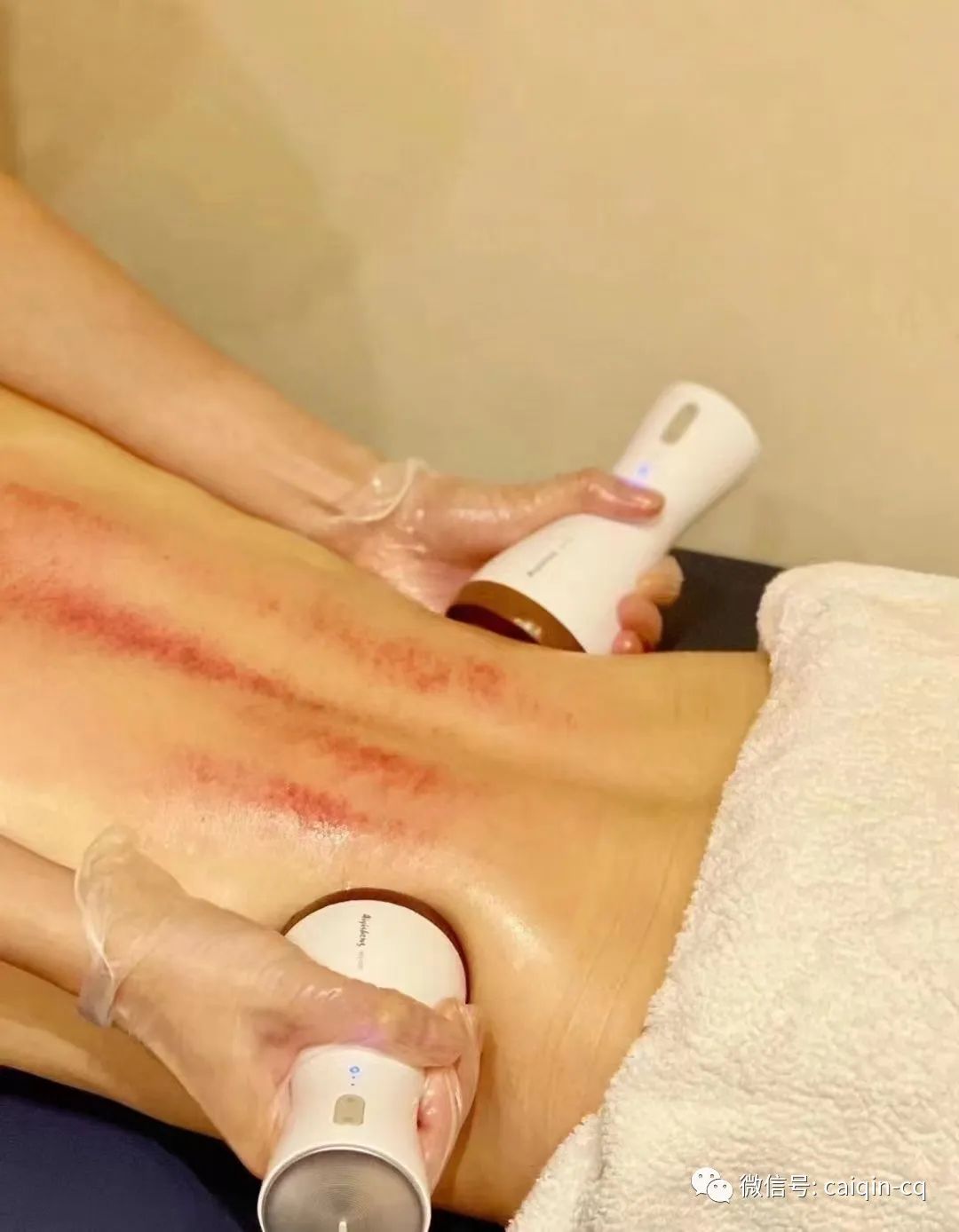
Precautions, contraindications, and cautions for Gua Sha
Although Gua Sha is an excellent method of regulation, it involves contact with the skin and should not be taken lightly. So, what precautions should be taken when performing Gua Sha? What are the contraindications or cautions for Gua Sha? Understanding these can make the entire Gua Sha process safer and more effective.
[Precautions before and after Gua Sha]
1. Before Gua Sha, please disinfect the Gua Sha tools (using 75° alcohol).
2. During Gua Sha, ensure the room is warm, ideally around 25 degrees Celsius.
3. After Gua Sha, as the sweat pores are opened and pathogenic Qi is expelled, some body fluids will be consumed, so it is best to have the patient drink a cup of warm water (preferably slightly sweetened) and rest for 15-20 minutes.
4. Within one day after Gua Sha, avoid cold showers; after 2-3 hours, a hot shower is acceptable. After Gua Sha on the scalp, it is best not to wash the hair on the same day.
5. After sweating from Gua Sha, avoid cold and wind to prevent external pathogens from entering the body through the open pores.
6. After Gua Sha, simply wipe the treated area with a tissue or towel to remove the Gua Sha oil.
7. Some chronic diseases should be combined with regular medication when using Gua Sha therapy, while acute diseases should be promptly treated at a hospital, with Gua Sha as an adjunct therapy.
[Contraindications and cautions for Gua Sha]
1. Gua Sha is prohibited on the abdomen and lower back of pregnant women, as well as on women’s nipples.
(Pregnant women are not advised to undergo Gua Sha therapy; if Gua Sha is indeed necessary, please seek a professional to perform it.)
2. Gua Sha is prohibited for diseases with bleeding tendencies, such as leukemia and thrombocytopenia.
3. Gua Sha is prohibited for highly allergic skin conditions, skin diseases, or areas with broken ulcers or sores.
4. Gua Sha is prohibited on fresh or unhealed wounds, areas of trauma or fractures, and on the head and neck of infants with open fontanelles.
5. Gua Sha is prohibited on the five sense organs (eyes, ears, nostrils, tongue, mouth, lips), and on the front and back yin areas.
6. Gua Sha is prohibited for those who are intoxicated, overly hungry, overly full, overly thirsty, or excessively fatigued to avoid fainting during the procedure.
7. Gua Sha is prohibited for patients with severe heart disease experiencing heart failure, kidney disease with renal failure, ascites due to liver cirrhosis, severe diabetes, or severe systemic edema.
8. Gua Sha should be used cautiously for elderly patients with chronic illnesses who are extremely weak or emaciated (or first use moxibustion to tonify Qi, then follow with gentle Gua Sha).
9. Gua Sha techniques should be avoided on areas with prominent blood vessels; gentle pressing techniques can be used to avoid blood vessels. For patients with varicose veins or edema in the lower limbs, scraping should be done from the bottom up (using the thick edge) with gentle techniques.
The order, direction, time, and course of Gua Sha
Although Gua Sha is an excellent method of regulation, it involves contact with the skin and should not be taken lightly. So, what is the proper order for performing Gua Sha? How long should each session last? How often should sessions be spaced? Understanding these can make the entire Gua Sha process safer and more effective.
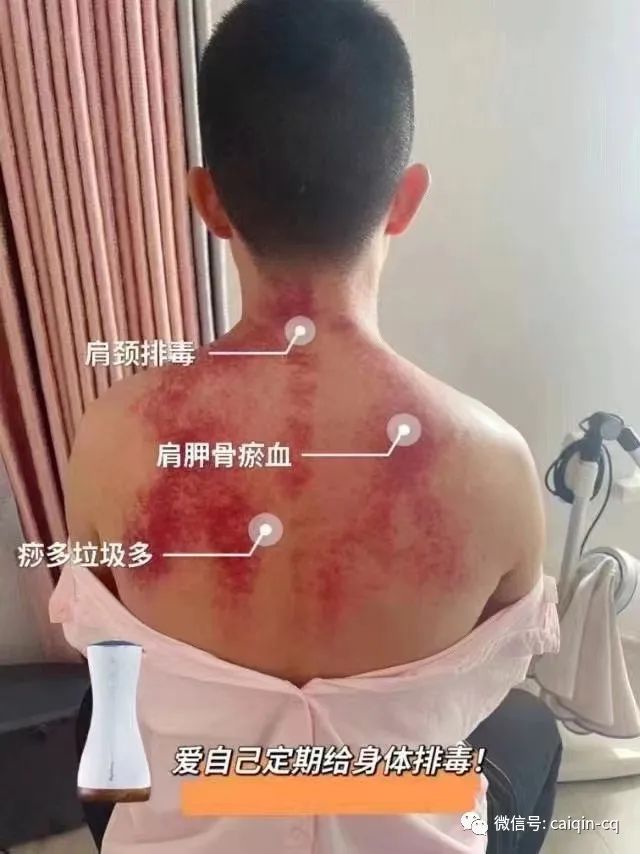
[Order of Gua Sha]
Generally, the order of scraping during Gua Sha is as follows: head, neck, back (thoracic, lumbar, sacral regions), chest, abdomen, upper limbs, and lower limbs. It is important to note that except for the Ren (Ren Mai) and Du (Du Mai) meridian points along the body’s midline (such as Zhongfu, Qihai, Baihui), other acupuncture points are symmetrically located on both sides of the body, such as the two kidney points on the lower back and one Neiguan point on each inner side of the upper limbs. During Gua Sha, except for the Ren and Du meridian points, other points should be scraped symmetrically. Generally, complete one area (meridian or acupuncture point) before moving to another area.
[Direction of Gua Sha]
Scraping should be done in a single direction from proximal to distal, from top to bottom.
[Duration of Gua Sha]
1. Each area should generally be scraped no more than 20 times, based on the appearance of Sha. If no Sha appears, do not force it. If Sha continues to appear after scraping, continue until it stops.
2. The force of scraping should start light and gradually increase, maintaining even pressure.
3. Typically, a patient should select 3-5 areas for treatment.
4. The duration of scraping should be flexibly adjusted based on the patient’s age, constitution, condition, duration of illness, and the area being treated.
5. For routine health maintenance Gua Sha, the operation should generally not exceed 30 minutes; for localized treatment, it should be 10-20 minutes.
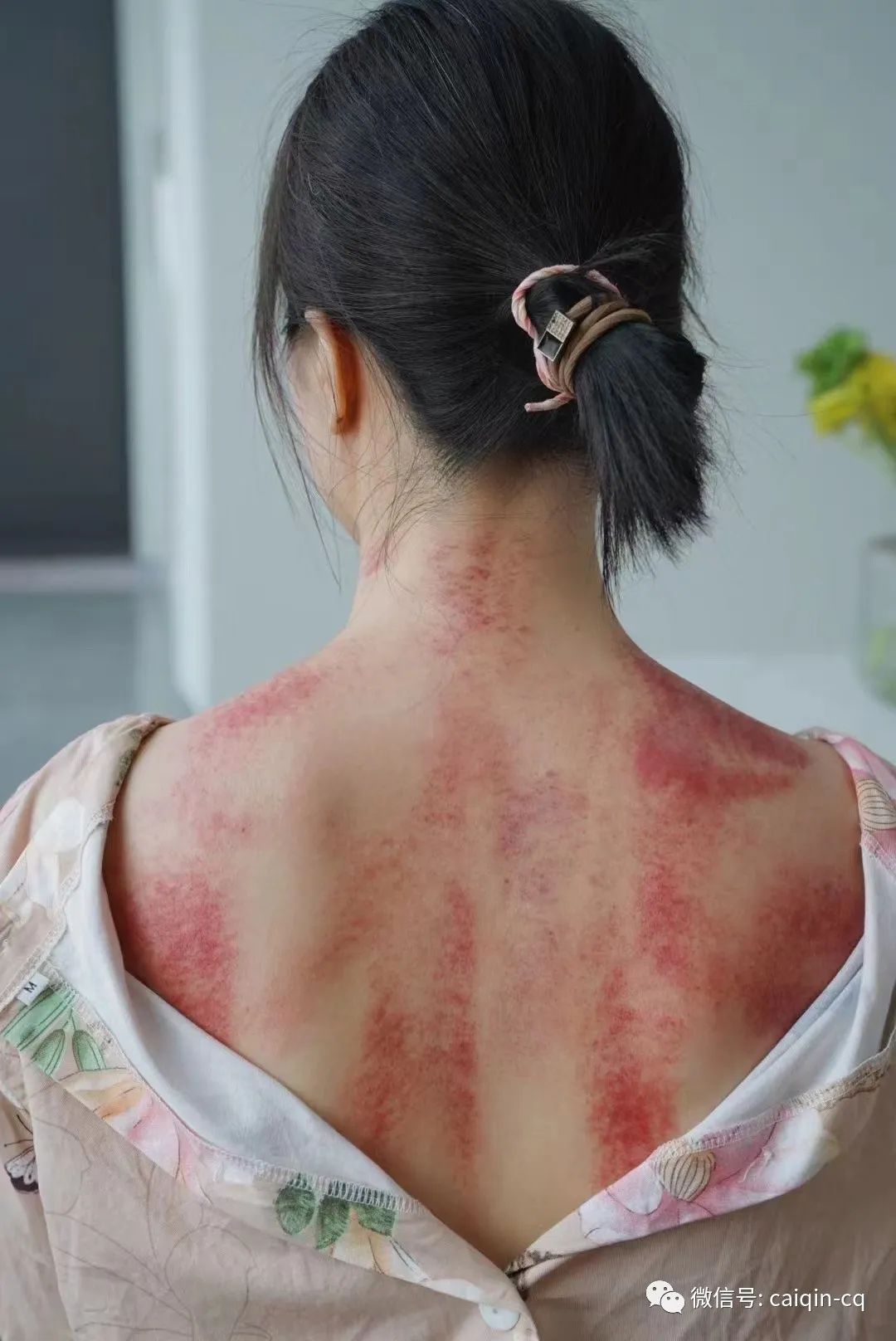
[Frequency and course of Gua Sha]
1. After a patient undergoes Gua Sha and Sha appears, the next Gua Sha session should be spaced 3-6 days apart, based on the retreat of Sha (complete disappearance of Sha marks). Generally, 7-10 sessions constitute one course of treatment.
2. For health maintenance Gua Sha (generally not requiring Sha to appear), it can be performed every 1-2 days.

